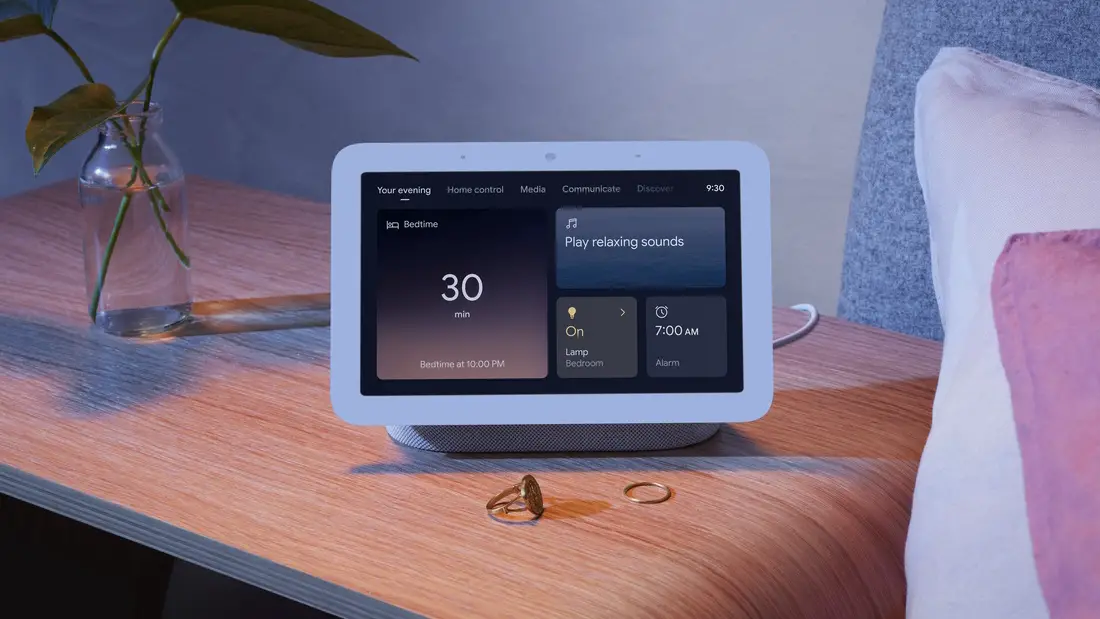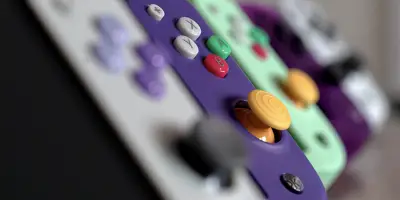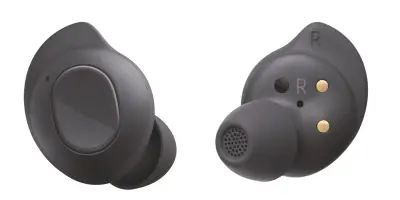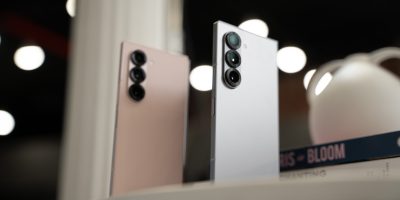It’s been a little over two years since Google introduced the Nest Hub, which was originally named the Google Home Hub. The smart display was rebranded back in May of 2019, and now, we have an all-new 2nd-gen Google Nest Hub coming later this month.
The all-new Nest Hub largely retains the same design as its predecessor, with the floating display resting atop the fabric covered base. There are four colors to choose from: Chalk, Charcoal, Sand, and Myst, with the latter being the newest addition to the lineup.
At first glance, you may not actually recognize the differences between the first iteration and Google’s latest Nest Hub. But it’s when you start to look a bit deeper, is when the 2nd-generation begins to stand out. While the display still features 2015-esque bezels, Google has introduced a new display which gets rid of the “lip” around the edges.
There are three cutouts to be found along the top edge of the display, but that’s actually where most of the magic lies. Google has introduced its Soli radar sensor in the Nest Hub, which is designed to help determine if you are sleeping or not.
Using Soli for sleep tracking
Soli was introduced in the Pixel 4, while development had started as part of Google’s ATAP division. On the Pixel 4, the Soli sensor made it possible to control your music just by waving your hand in front of the display, but it never really panned out to be much more than a questionably-useful gimmick. Google then opted to bring the same sensor to the Nest Thermostat so that it can recognize when someone’s in the room and adjust the temperature accordingly.
As for how Soli will be used with the Nest Hub, Google is introducing its new Sleep Sensing feature. This is not enabled by default, nor does it make use of a camera, as there are still plenty of privacy concerns with having a camera in a device designed for your nightstand. Instead, Sleep Sensing is available for those who want to opt into it, and can identify your movements while you sleep.
These include your breathing patterns, whether you are coughing or snoring, and any changes to the amount of light in the room that would cause disturbances. The key here is that you will need to properly calibrate the Nest Hub, which includes putting it on your nightstand, and having the Soli sensor face your torso.
Then, Google will algorithmically look at the various bits of data to analyze how well you slept over the course of the night. If you want to keep track of the data collected to see how you have been sleeping, you can connect your Nest Hub to the Google Fit app on your phone.
In an effort to make sure that this feature would work as seamlessly as it hoped, Google conducted more than 110,000 nights of tests. The results of those tests were then compared to other sleep studies, which resulted in no differences and Soli seems to be “on par or even better” when compared to other popular sleep tracking devices.
Viewing the data
As we stated before, you’ll be able to sync the results from Soli with Google Fit to keep track of how you’ve been sleeping. But you can also access the data and information right from the Nest Hub itself. There are weekly summaries to show you how you slept throughout the week.
The Nest Hub also analyzes your sleeping patterns and habits in an effort to provide recommendations on how you can sleep better. These may include setting a new Relaxation Routine, or creating reminders for when you need to get away from the TV and into bed.
Google integrated a three page summary of your ‘Sleep Details’ when using the Nest Hub and its sleep-tracking prowess. The Quality page shows how much light was emitted in the room, along with a temperature sensor. You’ll be able to view any periods of coughing or snoring, and another area reveals how long were you actually in a deep sleep and when you were restless.
Price and availability
Google’s all-new Nest Hub is available for pre-order today, for just $99 from the Google Store. The smart display comes in four colors, and will also be arriving at Best Buy, Walmart, Target, and other retailers on March 30th.
The all-new Sleep Sensing feature is said to be in a “free preview” stage, but Google is exploring a potential subscription fee for those who wish to continue using this beyond the preview period. It will also be interesting to see if there is any integration with future Fitbit wearables, now that Google owns Fitbit.
Let us know if you’ll be grabbing one of these for yourself, or if you’ll be sticking with the one you already have.











Comments